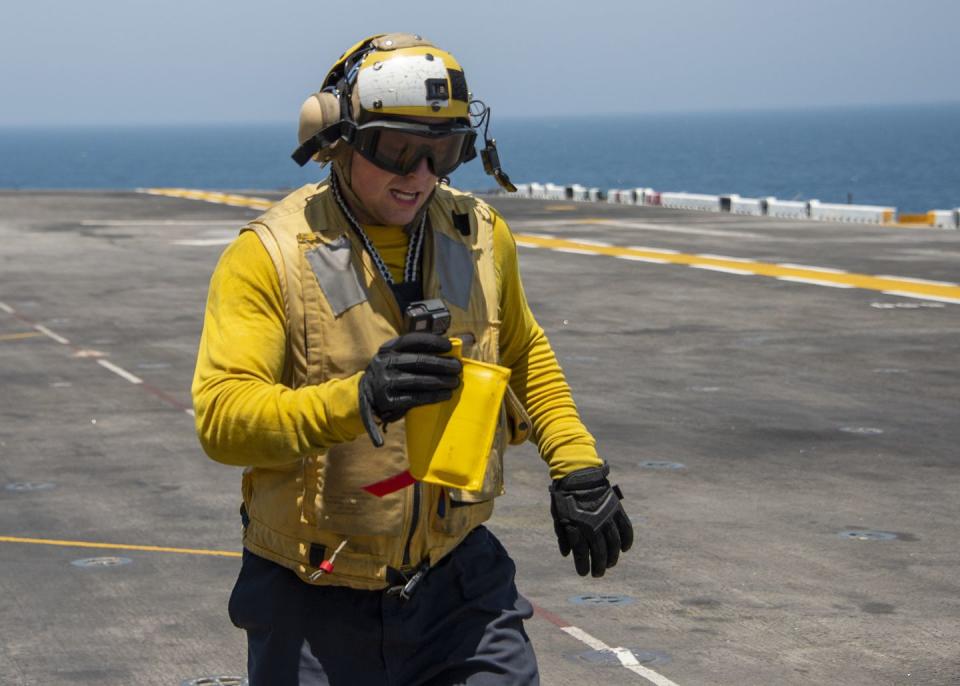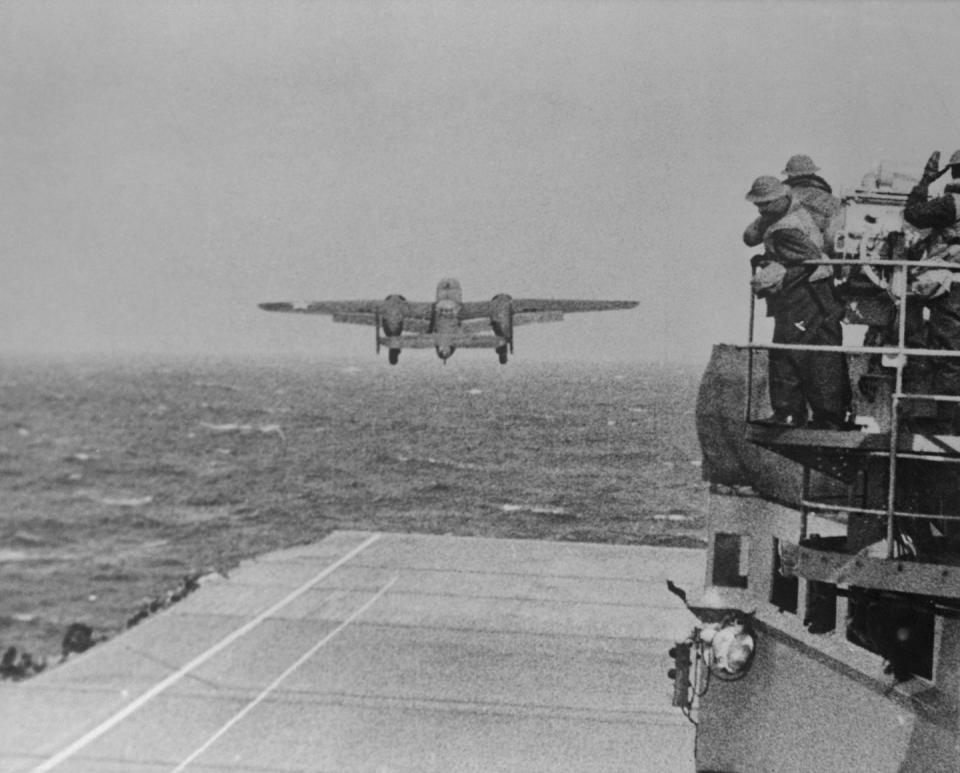To Prevent Cyber Snooping, the U.S. Navy Is Relying on WWII-Era Communications

The U.S. Navy, anticipating a future when a high-tech enemy could read its electronic communications, is going back to a hack-proof means of sending messages between ships: bean bags. Weighted bags with messages inside are passed among ships at sea by helicopters.
In a future conflict with a tech-savvy opponent, the U.S. military could discover even its most advanced, secure communications penetrated by the enemy. Secure digital messaging, voice communications, video conferencing, and even chats could be intercepted and decrypted for its intelligence value. This could give enemy forces an unimaginable advantage, seemingly predicting the moves and actions of the fleets at sea with uncanny accuracy.

Last week, a MH-60S Sea Hawk helicopter delivered a message from the commander of an amphibious squadron to the captain of the amphibious assault ship USS Boxer. The helicopter didn’t even land to deliver it, dropping it from a hovering position before flying away. The message was contained in a bean bag dropped on the Boxer’s flight deck.
The bean bag system, as Military.com explains it, is nearly eight decades old. The system dates back to April 1942, when a SBD Dauntless dive bomber assigned to the USS Enterprise was flying a scouting mission ahead of the USS Hornet. Hornet, about to launch sixteen B-25 Mitchell bombers on a raid against Japan, was traveling in extreme secrecy to preserve the element of surprise. The Dauntless pilot encountered a Japanese civilian ship and, fearing he had been spotted, dropped a message in a bean bag on the deck of Hornet. You can see some archival footage of the event here.

The bean bag used in the Boxer exercise was even modeled after the one used in 1942.
"I started with the original measurements of the bean bag used on the USS Enterprise in 1942," Aircrew Survival Equipmentman 1st Class Carlos R. Freireizurieta told Military.com, “but also weighed [this one] down for an accurate drop.”
Bean bags aren’t the only old tech the Navy is bringing back. In 2016, NPR reported that the service was reintroducing sextants as a navigational tool for officers. The U.S. armed services are heavily reliant on the satellite-based Global Positioning System for navigation, making jamming or spoofing GPS signals a major priority for adversaries. If they’re successful, the military must be able to navigate from Point A to Point B the old fashioned way—by sextant if necessary.
You Might Also Like
